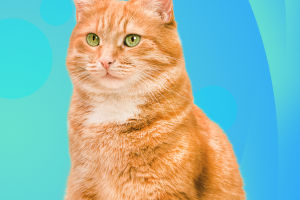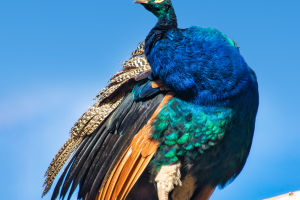The Cute Animals
The cat is a highly gifted and intelligent animal. From the anatomical characteristics of the central nervous system, cats have the typical cerebral hemispheres of highly intelligent creatures and a rich and well-developed cerebral cortex.
For example, cats have strong learning and memory skills, are very good at understanding people and can "learn by example" and apply what they have learned to other different problems.
It can turn on the tap, drink from it, and then turn it off when it is finished. Cats have a strong sense of time and can predict when their owners will feed them, and can even sense when their owners are going away or on vacation, and become more attached to them.
They can also predict certain natural phenomena, such as earthquakes, thunder, and wind. With proper training, cats can even learn to stand on their hind legs and retrieve thrown objects.
Cats sleep half of the day Cats spend 14-15 hours a day in sleep, and some cats sleep more than 20 hours, so they are called "lazy cats". However, if you look closely at the cat sleeping, you will find that the cat's ears will move when there is a sound, and if someone approaches, the cat will get up at once.
Cats never consider themselves to be their master's servants. Compared to dogs, cats appear to be somewhat capricious. But anyone who thinks so does not know much about the habits of cats.
Originally, cats are animals that like to act alone, unlike dogs, who follow their master's orders and act collectively. Therefore, it does not consider the master as a monarch, obedient to orders. Sometimes, you can call it, but it does not hear.
Cats and their masters are not master-slave relationships; seeing them as equal friends is better. It is this relationship that is unique and attractive.
A high wall, graceful walking, light jumping Seeing the cat walking and light jumping on the high wall, people can't help but admire its sense of balance.
This is mainly due to the cat's outstanding reactive nerves and sense of balance. It only needs to slightly change the position and height of its tail to balance its body, and then use the strong muscles and strong joints of its hind feet to jump agilely, and even if it falls in the air, it can change its body position in the air and land lightly and accurately.
Cats love to lick their bodies and clean themselves a lot of the time. It will use its front paws to wipe its beard after a meal and use its tongue to lick its fur after being held. This is the kitten in the body to remove the odour and dirt. The cat's tongue has many rough little protrusions, which is the most suitable tool to remove dirt.
When a cat is happy, its tail will stand up or make a purring sound. When a cat is angry, it will wag its tail hard and may lunge at you if you make it angry.
Cats are extremely agile and powerful, so they have achieved a high level of predatory skills. Cats do not always hunt for mice because they are hungry, but sometimes because they are playing sports or games. After catching the prey, the cat does not immediately bite it to death, but rather tricks the unfortunate prey and then eats it, the cat's purpose is to exercise its predatory skills.
As a hunter, the cat has very good eyesight and spends most of the day gazing keenly at its surroundings. Even when sleeping, its senses are still receiving signals and are in a state of alert. As soon as there is the slightest movement of danger, the cat can immediately jump up, ready to defend against intruders.


